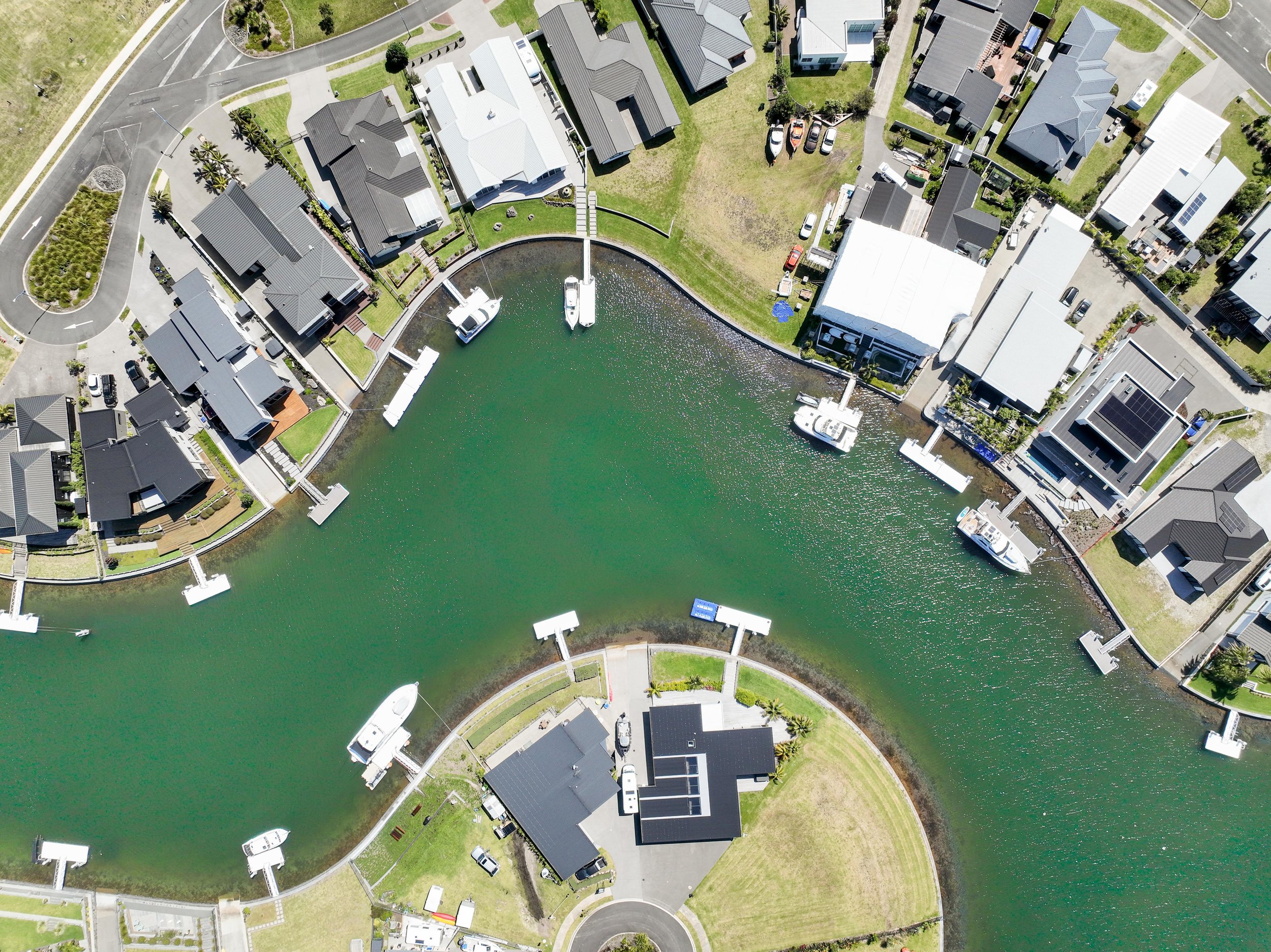
Canal Design
Stage 1 Canal
The canal design approach for stage 1, (up to the lock) allowed for significant boat movements collectively from the 74 canal front allotments, 230 plus vessels in the marina, visiting craft and trailer boats to and from the public boat ramp. The tide flows freely in this area where the tidal range is 2 metres between Mean High Water Spring (MHWS) and Mean Low Water Spring (MLWS). Tide levels can vary significantly often influenced by air pressure (barometric pressure), wind direction and velocity, catchment rainfall, less often by distant tsunami events. Highest Astronomical Tide (HAT) for a standard atmospheric pressure is 400mm above MHWS. With very low atmospheric pressures coinciding with easterly winds the tide level will often elevate above the revetment wall cap.
The revetment wall is a substantial permeable hand laid stone structure designed to enable relief to hydraulic pressure differentials that can arise as tides rise and fall and ground water levels build in time of heavy rainfall. The foot of the wall is buried 1.0m below the canal side soils supported which slopes at a gradient of 1 vertically to 3 horizontally to the canal floor. The slope is covered with a geotechnical cloth and overlaid with rock rip-rap to protect against erosion. This also provides added stability to the revetment wall.
Soils encountered through the development are fine to medium grain permeable sands with shells and underlain with occasional mud. Soil strengths are determined prior to construction. Preloading (placing soil on top of the ground to compress underlain weak soils) is occasionally required during earthworks to meet NZ Standards for typical two-level housing. Extraordinary heavy buildings may require specific engineering. NZ Standards are occasionally reviewed and introduced into regulation. Additional works are to be undertaken as required for each stage release to achieve standards.
Stage 2 Canal
The design approach to stages 2 and beyond incorporates a Lock. The lock and associated weir enable a higher tide level to be maintained in canals above the lock adding to the amenity of the canals by effectively retaining high tides to canal front properties. The weir level is 600mm below MHWS. This is designed to provide enough tidal exchange to maintain water quality. Formation of the canal floor and Lock enables craft with up to 2.5m draft to navigate throughout the entire canal network.
Continual cycling of the lock by vessels passing through the lock will lower the locked water levels by 100 to 200mm before being replenished with the next flood tide.
Stage 5+
The design approach for stage 5 and subsequent stages is the same as for stage 2 except for a 150mm higher revetment wall cap to address recent monitoring of tidal influences and potential rises in tide levels currently projected by the scientific community thought to be influenced by green-house gas emissions.
Sea Level Rise
The District Council is bound by National Policy Statements to set minimum floor levels when issuing Building Permits. These are set with healthy margins to address risk of inundation well into the future (100yrs plus). Minimum floor levels (2023) are set at 2m above HAT.
It’s worth noting Hopper Developments undertook its first canal development in the Coromandel, Pauanui Waterways, in 1993, and since have been unable to find any notable change in the sea level over the past 30 years.

